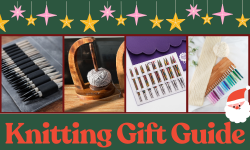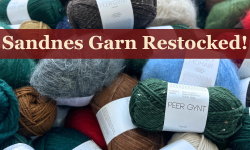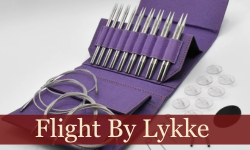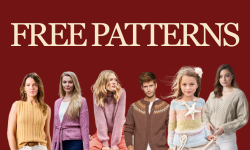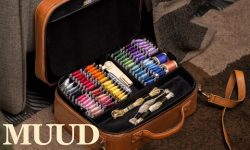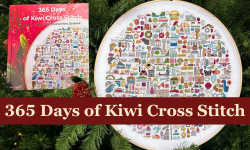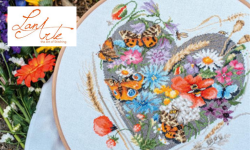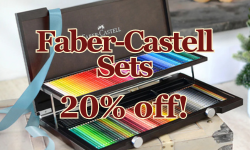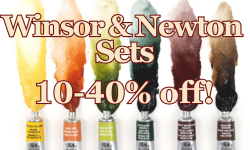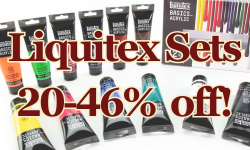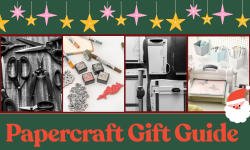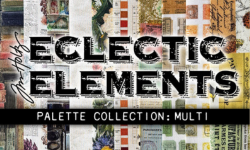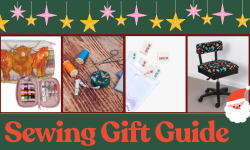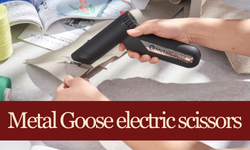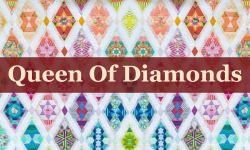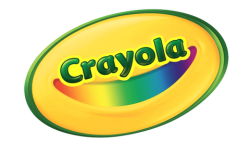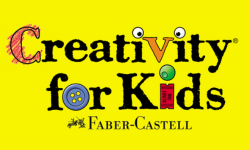The Ultimate Knitting Needle Sizes & Yarn Weight Guide
The Ultimate Knitting Needle Sizes & Yarn Weight Guide
Choosing the right knitting needle size for your yarn should be simple, but it rarely feels that way. With so many yarn weights, needle types, and size systems out there, it's easy to lose confidence before you've even cast on your first row.
At The Ribbon Rose, we know that understanding your tools makes every project easier, faster, and a lot more enjoyable. In this guide, we're covering everything you need to know about yarn weights, different types of knitting needles, and how to match them up perfectly. We'll also tackle common questions, like whether you really need to stick to the recommended needle size, and how to substitute yarns without accidentally knitting a tea cosy instead of a jumper.
Whether you're just getting started or looking to sharpen your skills, this guide will set you up to knit smarter, not harder.
What is Yarn Weight?
Yarn weight is all about how thick the strand of yarn is, not how heavy the ball feels in your hand. It's one of the biggest factors that decides how your finished project will look, feel, and wear.
You'll often see yarns labelled as:
- DK (double knit): A brilliant midweight option for garments and accessories that aren't too heavy or too flimsy.
- Aran or worsted weight: Thicker yarns, perfect for warm jumpers, cardigans, and cosy winter gear.
- Chunky or bulky: Knits up fast, creating that thick, squishy texture everyone loves.
- Super chunky or super bulky: Ideal when you want to make a bold impact, and maybe finish the project before you lose interest.
If you're ready to dive into your next project, our full collection of wool has plenty of options to inspire you.
What Are The Main Types of Knitting Needles?
Not all knitting needles are created equal. The type you choose can make a huge difference to your speed, comfort, and even the final look of your project. From classic straight needles to flexible circulars and fiddly but brilliant double-pointed needles, there's a perfect match for every kind of knitter.
Straight and Single Pointed Needles
Straight needles are the image most people picture when they think about knitting — two sticks, one pointy end, and a stopper at the other to keep your stitches from sliding off into the abyss. They're perfect for flat projects where you work back and forth, like scarves, blankets, and the front and back pieces of jumpers.
You'll find straight needles in different lengths and materials, from sleek metal to warm bamboo. If you're new to knitting, they're a great place to start as they’re simple, sturdy, and easy to handle.
Circular Needles
Circular needles are two short needles connected by a flexible cable. They're the go-to for knitting in the round, things like hats, cowls, and seamless jumpers, but they're just as handy for big flat projects that would be too heavy on straight needles.
Circulars distribute the weight of your project across the cable, saving your wrists and making your knitting sessions way more comfortable. Whether you want a fixed circular for simple projects or an adjustable set for flexibility, circular needles are an absolute game-changer.
Double Pointed Needles (DPNs)
Double pointed needles, or DPNs, are small needles pointed at both ends, used mainly for knitting small circumferences like socks, gloves, and sleeves. They come in sets of four or five, and the idea is to knit in a continuous round across multiple needles.
Yes, they take a bit of practice. But once you've mastered DPNs, they open up a whole new world of knitting possibilities. Check out our top-quality double pointed needles if you're ready to give them a go.
Interchangeable Needles
Interchangeable needles are exactly what they sound like: a system of needle tips and cables that you can mix and match. Instead of multiple different sizes and lengths, you just swap out the parts you need.They're a brilliant investment if you knit a lot or like having options. Our full range of interchangeable needles covers everything from everyday projects to more adventurous designs.
Cable Needles
Cable needles might be small, but they play a big role in some of the most striking knitting designs. These short, often curved tools hold stitches temporarily while you twist and cross them to create textured cables. Without them, achieving that distinctive, intricate look you see in Aran jumpers and detailed scarves would be almost impossible.
Understanding Knitting Needle Sizes
Knitting needle sizes can seem like a technicality, but they have a huge impact on how your project turns out. The size refers to the thickness of the needle shaft, not its length, and it controls everything from stitch size to the feel of your finished fabric. Thicker needles make bigger, looser stitches, giving you a softer and more drapey result. Thinner needles create tighter stitches, leading to a firmer, more structured fabric.
Here in New Zealand, we mostly stick to the metric system, so needle sizes are listed in millimetres: think 4mm, 5mm, or 10mm. Occasionally, especially if you enjoy a good vintage pattern hunt, you might come across the old UK sizing system, which goes in the opposite direction: the bigger the number, the smaller the needle.
Getting familiar with needle sizes gives you real control over your knitting. You’ll not just be following patterns blindly, but actually shaping how your fabric feels, fits, and wears.
Which Needle Size is Right for My Yarn?
Matching your needle size to your yarn is one of those things that sounds obvious, but makes all the difference once you actually start doing it properly.
Lighter yarns generally work best with smaller needles, around 2.75mm to 3.75mm. DK yarns love a slightly thicker needle, giving you balanced stitches that are neither too tight nor too floppy. For aran and worsted yarns, a 5mm needle will usually have you covered.
If you’re working with chunky yarn, look at needles between 6mm and 8mm, big enough to keep the stitches soft without turning them into gaping holes. Super chunky and super bulky yarns need even larger needles, anything to really let the yarn breathe.
Do You Have to Use the Recommended Needle Size?
No one is going to come knocking if you don’t. But if you skip the suggested size without thinking it through, you might end up knitting a hat that fits your dog better than it fits you.
Using a smaller needle than recommended will give you a denser, tighter fabric. That can be exactly what you want if you’re knitting a structured piece like a bag or a fitted beanie. Using a larger needle, on the other hand, will open up your stitches and create a softer, stretchier fabric, perfect for breezy wraps or lightweight jumpers.
The secret to changing needle size successfully? Always, always swatch. Knit a small sample square, measure your stitches and rows over 10cm, and see if it matches the pattern's gauge. If it does, you’re good to go. If it does not, adjust until it does.
How to Substitute Yarns
Swapping yarns sounds adventurous and exciting (and it can be), but it’s also where a lot of well-meaning projects go sideways. The first thing you have to match is the gauge. If your new yarn knits up tighter or looser than the pattern expects, you’re going to end up with sleeves that are a drastically wrong size. Always check how many stitches and rows your substitute yarn gives you over 10cm compared to the pattern.
Next, think about fibre. Wool is elastic and forgiving. Cotton tends to sag and stretch. Acrylic varies, but often behaves differently again. If your new yarn has a completely different fibre content, it could change the entire drape, fit, and feel of your final piece. Sometimes that is fine, sometimes it is a disaster.
Last, but absolutely not least, check the yardage. Two 100g balls of yarn can cover wildly different amounts of ground depending on thickness and fibre type. If you are substituting, buy extra. Nothing kills the joy of knitting faster than running out of yarn halfway through a sleeve and realising the shop no longer stocks your dye lot.
Done right, yarn substitution is a brilliant way to put your personal stamp on a pattern. Just a little planning makes all the difference between a custom masterpiece and an expensive regret.
Ready to Get Started?
Whether you’re picking up needles for the first time or plotting your next big project, having the right tools and advice makes all the difference. At The Ribbon Rose, we’re here to help with everything from choosing the perfect yarn to finding the ideal knitting needles for your style.
Need advice, inspiration, or just a good chat about wool? Pop into our store, send us a message, or explore our huge range online. We’re ready when you are.





